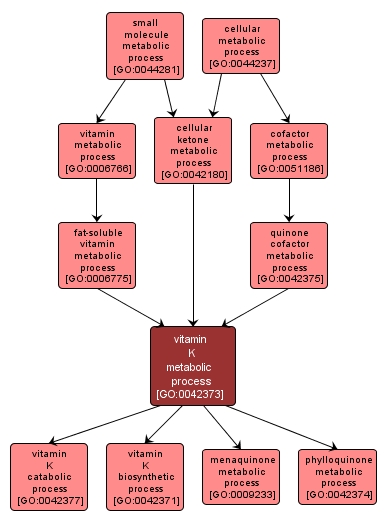| Desc: |
The chemical reactions and pathways involving any of the forms of vitamin K, quinone-derived vitamins which are involved in the synthesis of blood-clotting factors in mammals. Vitamin K substances share a methylated naphthoquinone ring structure and vary in the aliphatic side chains attached to the molecule. |














